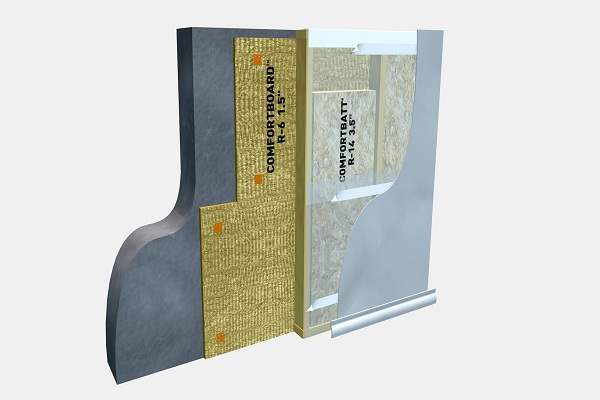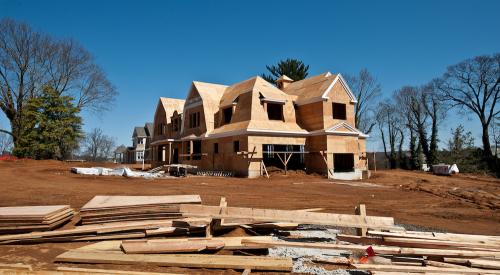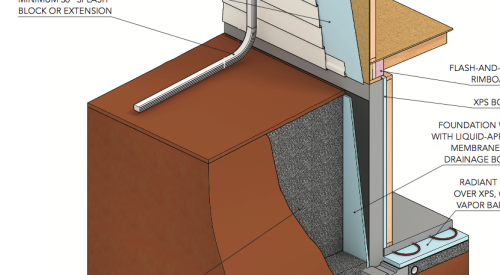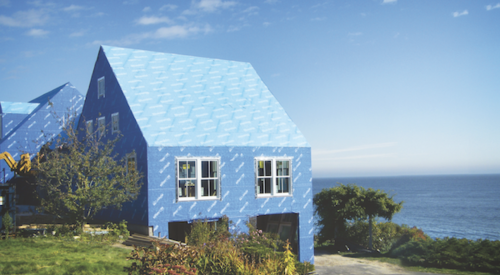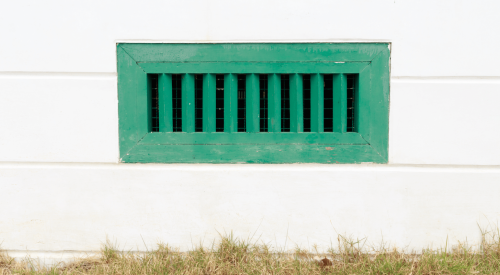The Problem
Premium Custom Home Builder, Doug Tarry of Doug Tarry Custom Homes (based in St. Thomas, Ontario) noticed moisture condensing on the polyethylene vapor barrier in the basements of some new builds, causing water to pool on the basement floor and creating conditions favorable to mold growth. Homeowners called him in to inspect, mistakenly concerned that the basement foundation was leaking.
The condition was particularly notable in the summer, in homes with poured concrete walls--especially those with a sunny exposure, where full-height batt/bag wrap insulation was used with full-height polyethylene on the interior side of the stand-off wall. Below grade, the wall could not dry to the outside due to damp-proofing, drainage membrane and soil. It also could not dry to the inside due to the poly layer. The issue was not uncommon in many new homes across the province due to similar wall assemblies that meet and, at times, exceed code.
The Solution
A great deal of research and field testing was conducted to learn more about the challenges of controlling vapor diffusion in a basement wall assembly, as well as how the wall needs to work differently during the summer months. Doug Tarry Custom Homes engaged with leading building science educators including Gord Cooke, Dr. John Straube and John Godden to develop the Better Basement Wall and, ultimately, the Optimum Basement Wall.
Assembly Details:
- Foundation Wall
- ROXUL COMFORTBOARD 80 - 1.5”
- ROXUL COMFORTBATT (R14) - 3.5”
- Vapour Barrier
- CertainTeed MemBrain Smart Vapor Retarder
- Drywall
 Doug Tarry shows the ROXUL stone wool insulation used in the new wall system. Click to enlarge.
Doug Tarry shows the ROXUL stone wool insulation used in the new wall system. Click to enlarge.
The goal was to bring the air barrier to the warm side of the wall and use the poly as a combination air/vapor barrier. The other step was to change out the top portion of the poly with breathable Smart Membrane to permit the summer vapor migration to dry through the wall into the conditioned basement.
Using materials that wouldn’t trap moisture was integral to the success of the new wall system. ROXUL insulation was chosen because of its superior moisture repellency. ROXUL insulation allows vapor to flow through without collecting. It is also dimensionally stable and won’t slump in the wall cavity, even when exposed to water, maintaining thermal performance.
In addition, its stone-based composition makes it naturally resistant to mold, mildew and bacterial growth. An added benefit of using the semi-rigid ROXUL COMFORTBOARD is that it creates a continuous layer of insulation on the exterior below-grade walls, preventing thermal bridging and energy loss. Combined, the ROXUL COMFORTBOARD 80 and COMFORTBATT R14, achieved an R20-rated wall assembly. After consulting with Chief Building Official, Leon Bach, the new wall design was permitted to create a more forgiving wall system that has four basic principles:
- Limit the ability for water to enter the wall.
- Use materials that won’t trap moisture.
- Change the location of the air barrier.
- Allow drying paths for moisture migration.
Conclusion
In the end, the wall new system performed beyond expectations. To further prove performance of the Optimum Basement Wall, Doug Tarry Custom Homes partnered with ROXUL Insulation and George Brown College to study the wall system as part of the Argile Project. Together, they plan to educate builders, renovators, building officials, warranty programs and code planners about the need to rethink the design of basement wall systems.
Contact Info
ROXUL Inc.
Dave Smith
1-800-265-6878
Doug Tarry
Doug Tarry Custom Homes
519-631-9300
